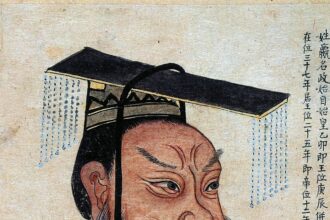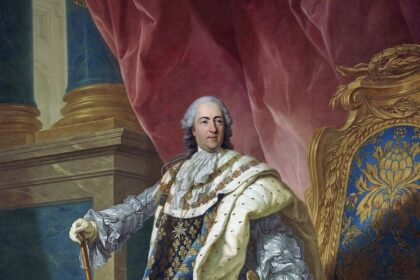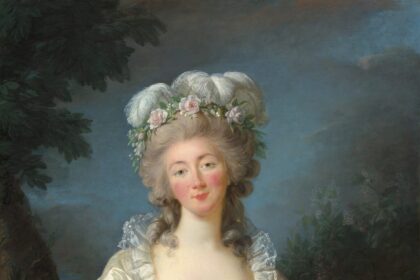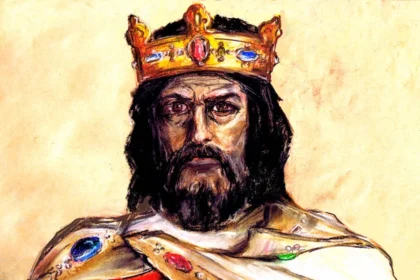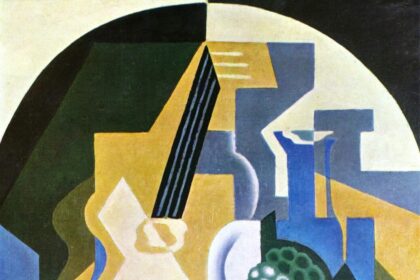As an art enthusiast, I have always been fascinated by the world of abstract expressionism – a genre of art that emerged in the 1940s and 50s as a response to the tumultuous times of World War II. Abstract expressionism is a style of painting that emphasizes spontaneous, automatic or subconscious creation, often resulting in large-scale works that are expressive and emotional. In this article, I will explore the history, characteristics, techniques, and impact of abstract expressionism on art and culture, as well as provide insights into how to appreciate this fascinating art form.
Introduction to Abstract Expressionism
Abstract expressionism is a genre of art that emerged in the United States in the 1940s and 50s, characterized by a focus on the spontaneous and automatic creation of art, often resulting in large-scale works that are emotionally charged and expressive. The movement was largely a response to the devastation of World War II, as artists sought to create a new style of art that was free from the constraints of traditional art forms and expressive of the chaos and trauma of the times.
History and Development of Abstract Expressionism
The roots of abstract expressionism can be traced back to the 1930s with the emergence of surrealism, which emphasized the importance of the unconscious mind in artistic creation. However, abstract expressionism as a distinct movement did not emerge until the 1940s and 50s, with the work of artists such as Jackson Pollock, Willem de Kooning, and Mark Rothko.
One of the defining characteristics of abstract expressionism was its rejection of traditional art forms and techniques. Artists sought to create works that were spontaneous and automatic, using a variety of techniques such as dripping, pouring, and splattering paint onto the canvas. This resulted in works that were often large in scale, with a focus on color, texture, and form.
Characteristics of Abstract Expressionism
Abstract expressionism is characterized by its emphasis on spontaneous, automatic or subconscious creation, resulting in works that are expressive and emotional. The movement is often associated with large-scale works that feature bold, gestural brushstrokes, drips, and splatters.
The movement is also known for its rejection of traditional art forms and techniques, with artists seeking to create works that were free from the constraints of traditional art forms. This resulted in works that were often abstract, with a focus on color, texture, and form.
Another defining characteristic of abstract expressionism was its emphasis on the individual artist’s emotional state. Artists sought to create works that were expressive of their own personal experiences and emotions, resulting in works that were deeply personal and subjective.
Famous Abstract Expressionist Artists
There are several famous abstract expressionist artists who have made significant contributions to the movement. Jackson Pollock, for example, is known for his drip paintings, which involved dripping and splattering paint onto the canvas in an almost trance-like state. Willem de Kooning is another famous abstract expressionist artist, known for his bold, gestural brushstrokes and abstracted figures.
Other notable artists include Mark Rothko, whose large-scale, color field paintings emphasized the emotional and spiritual qualities of color, and Clyfford Still, whose works were characterized by their stark, abstract compositions and use of bold, contrasting colors.
Techniques Used in Abstract Expressionism
One of the defining characteristics of abstract expressionism was its rejection of traditional art forms and techniques. Artists sought to create works that were spontaneous and automatic, often using unconventional techniques such as dripping, pouring, and splattering paint onto the canvas.
Other techniques used in abstract expressionism included gestural brushstrokes, broad washes of color, and the use of multiple layers of paint to create rich, textured surfaces. Artists also experimented with different materials, such as sand, cement, and tar, to create works that were tactile and visually interesting.
Impact of Abstract Expressionism on Art and Culture
Abstract expressionism had a significant impact on the art world and on culture in general. The movement challenged traditional notions of art and paved the way for new forms of artistic expression. It also encouraged a more emotional and subjective approach to art, emphasizing the individual artist’s personal experiences and emotions.
The movement also had a significant impact on American culture, as it emerged at a time when the United States was asserting itself as a global superpower. Abstract expressionism came to be seen as a symbol of American cultural and artistic dominance, and many artists associated with the movement became international celebrities.
Contemporary Abstract Expressionist Artists
While abstract expressionism as a distinct movement has largely passed, its influence can still be seen in the work of many contemporary artists. Artists such as Anselm Kiefer, Gerhard Richter, and Julie Mehretu have all been influenced by abstract expressionism in their work, incorporating its techniques and themes into their own unique styles.
How to Appreciate Abstract Expressionism
Appreciating abstract expressionism can be a challenge for some viewers, as the style can be abstract and emotionally charged. However, by taking the time to understand the history and techniques of the movement, viewers can gain a deeper appreciation for the works themselves.
One approach is to focus on the emotional and expressive qualities of the works, allowing the colors, textures, and forms to evoke a personal response. Another approach is to consider the historical and cultural context in which the works were created, allowing viewers to gain a better understanding of the artists’ intentions and motivations.
Exhibitions and Museums Showcasing Abstract Expressionism
For those interested in exploring abstract expressionism further, there are several museums and exhibitions showcasing works from the movement. The Museum of Modern Art in New York, for example, has an extensive collection of works by artists associated with the movement, including Jackson Pollock, Willem de Kooning, and Mark Rothko.
Other museums with notable collections of abstract expressionist works include the Art Institute of Chicago, the San Francisco Museum of Modern Art, and the Hirshhorn Museum and Sculpture Garden in Washington, D.C.
Conclusion and Reflections on Abstract Expressionism
Abstract expressionism remains a fascinating and influential movement in the world of art. Its rejection of traditional art forms and techniques, emphasis on personal expression and emotion, and focus on the spontaneous and automatic creation of art continue to inspire artists and viewers alike.
By understanding the history and techniques of abstract expressionism, viewers can gain a deeper appreciation for the works themselves, allowing them to experience the emotional and expressive qualities of the movement firsthand. Whether exploring the works of famous abstract expressionist artists or discovering the influence of the movement on contemporary art, there is much to be gained from delving into the fascinating world of abstract expressionism.


